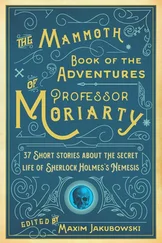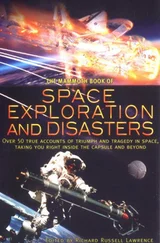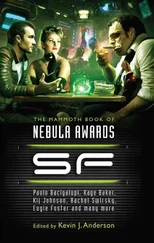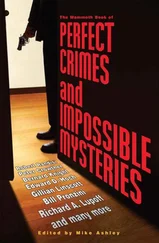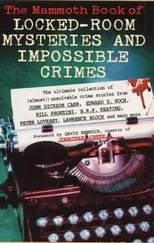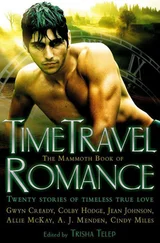The German Army’s ordnance ballistic section was interested in long-range bombardment weapons which were not forbidden to them by the Treaty of Versailles (1919). Under the terms of this Treaty, which had been concluded at the end of the First World War, Germany’s military power was strictly limited, but in 1919 rockets had not been considered to be serious weapons so they weren’t forbidden.
Von Braun was encouraged to continue his studies, completing a degree in aeronautical engineering in 1932 and a Ph.D two years later. His thesis was on rocket engines and was classified as a military secret.
After the Nazi party gained political power in 1933, von Braun’s rocket team continued their research. While Germany rearmed itself von Braun’s rocket team developed larger, longer ranged liquid-fuelled missiles. In 1939 the air force, the Luftwaffe, funded a joint service rocket research centre at Peenemunde and gradually overcame the basic problems of rocket engineering: flight stability, fuel management, steady combustion pressure, engine cooling and guidance. The commander of the army, the Wehrmacht, granted the Peenemunde centre additional funds and personnel so that they could produce a prototype operational missile, which should be able to carry 1 ton of explosives to a target 180 miles away. This was achieved on 3 October 1942. After an air raid (17 August 1943) on Peenemunde, production of the V-2 was removed to a secret location in the Harz Mountains.
By January 1945 it was clear to the German rocket scientists that Germany would lose the war and von Braun called a meeting to discuss to which Allied power they should offer their expertise. He said, “Let’s not forget that it was our team that first succeeded in reaching outer space. We have never stopped believing in satellites, voyages to the moon and interplanetary travel.”
He organized the escape of his team and their technical archives to the advancing US forces and on 2 May 1945 they made contact. The Americans responded with an effort called Operation Paperclip. This secured the Germans’ technical archives and parts for 100 V-2 rockets, which were taken to the USA.
The Soviets also recognised the value of German rocket designers and recruited some themselves, among whom was Hans Endert. He told Reg Turnhill, the BBC correspondent, after he heard that von Braun had gone over to the United States: “Knowing that the Americans knew everything, I had no scruples about helping the Russians because they offered me a decent salary and food rations which I could get nowhere else.”
The Soviets were aware that their former Allies had significant advantages in long-range bomber aircraft, so to counter this they were interested in developing long-range ballistic missiles. The Soviet leader, Joseph Stalin, imagined a more powerful version of the V-2, armed with a nuclear warhead. They set up a German engineering team under Helmut Grottrup at a base north-west of Moscow where they were to develop their own intercontinental ballistic missiles (ICBMs).
The Russians had their own tradition of the science and theory of rocketry. Their pioneer was Konstantin Tsiolkovsky. Tsiolkovsky had written a theoretical article called “Exploration of Cosmic Space with Reactive Devices” in 1898 but it was not published until 1903. In it he suggested the use of liquid propellants for rockets in order to achieve greater range and went on to state that the speed and range of a rocket were limited by the exhaust velocity of escaping gases. A substantial part of the article was devoted to a detailed description of the mechanics of putting a satellite into orbit.
The Soviets’ chief rocket designer was a Russian, Sergei Korolev; like von Braun, Korolev had served an “apprenticeship” in amateur and semi-official rocket groups. By the late 1940s the Soviets had learnt all they could from their German captives and had solved the overheating problems which were inherent in high-energy rockets, having to do this within the limits of Soviet metallurgy. They did this by creating an engine with four small, thickly walled combustion chambers – the RD-107 engine which was fuelled by kerosene and liquid oxygen and produced 225,000 lb of thrust. It was capable of being the basic element of either an ICBM or the booster or launcher of a spacecraft.
The key to a long-distance missile lay in Tsiolkovsky’s concept of multiple stages: the first, heavy stage enabled the rocket to break free from the earth’s gravity. The lighter upper stages would accelerate it to the speeds necessary for intercontinental ballistic trajectory or orbital flight. Ideally the upper stage engines should be lighter with a higher thrust-to-weight ratio, but lighter upper stages were beyond Soviet technology. Korolev came up with a compromise which was within the Soviets’ capability.
The compromise was a composite rocket with “strap-on” boosters around a central “sustainer” engine, the “staging” being parallel rather than vertical. At lift-off all the rocket’s engines fired. The “staging” occurred as the engines ran out of fuel, and then fell away. Korolev’s rockets were often described as looking like a “flared skirt”. The Russians called it “Semyorka” (old number seven).
On 4 August 1949 the USSR exploded its first nuclear weapon on an Arctic test range, whereupon the US Army demanded a tactical (battlefield) nuclear missile.
Von Braun’s early years in the United States had been comparatively frustrating, his team having first been set up at Fort Bliss in West Texas under the authority of the US Army. The US Air Force had recently become independent of the US Army and wanted long-range bombers to improve its strategic bomber force. Consequently, the United States was relatively disinterested in long-range ballistic missiles. Von Braun was slowly developing a proposal for an expedition to Mars when the Army’s demand for a tactical (battlefield) nuclear missile became a priority. In 1952 the United States was developing a 10 megaton thermonuclear weapon but the “H” bomb was too heavy for even the most powerful bomber the US Air Force possessed (the B-36). In 1953 the Soviet Union exploded its own “H” bomb which was lighter but less powerful. The US bomb tested at Bikini Atoll in 1954 weighed less than 10,000 lb, light enough to be delivered by an ICBM.
US development was concentrated on its own ICBM, the Atlas missile. Whereas the United States’ advantage in computers helped them to develop lighter warheads, the USSR lacked this expertise and their weapons remained heavy until the late 1960s.
Korolev’s team was moved to a new missile test range at Tyuratam and by 1955 they were involved in a crash program to get their ICBM design into production. The Soviet leader Mr Krushchev wanted the demonstration of their ICBM to coincide with the International Geophysical Year (IGY) in 1957. The IGY was supposed to be a year of international co-operation in scientific fields including atmospheric science. If Korolev’s prototype could carry a 2-ton thermonuclear warhead 4,000 miles (from the Soviet Union to the USA), it could carry a satellite into orbit.

The United States had worked out the cost of an earth satellite project, but it was rejected by the cost-conscious Truman administration. The US Air Force continued to dominate US attempts at rocketry, their missiles being of the cruise missile type such as the “Navajo” or the “Matador”. Von Braun’s (Army) team meanwhile had been moved to the Redstone Arsenal complex near Huntsville, Alabama where they had developed the V-2 into the Redstone, which was a tactical, battlefield missile capable of delivering a nuclear warhead. The successor to the Redstone was to be the Jupiter, with a range of over 2,000 miles. In 1956 von Braun’s team used the Jupiter’s Research & Development budget to fund a version of the Jupiter which would be capable of putting a satellite into orbit. The Jupiter C’s test flight delivered its nose cone 3,000 miles and reached a speed of 3,000 miles per hour, just less than the speed required for orbital injection. Meanwhile the Defense Department had decided that long-range or strategic missiles were the responsibility of the Air Force, so the Army was forbidden to produce anything with a range of over 200 miles.
Читать дальше


